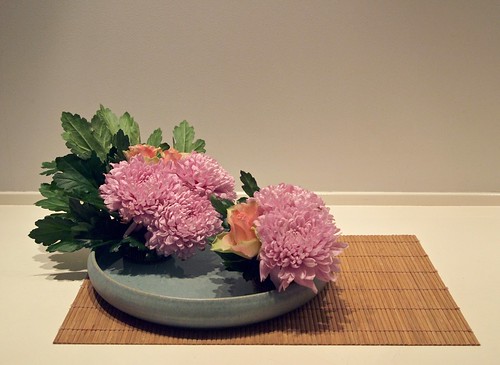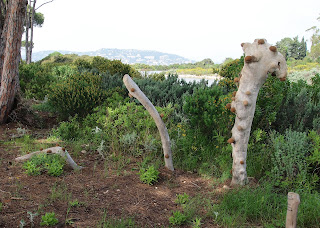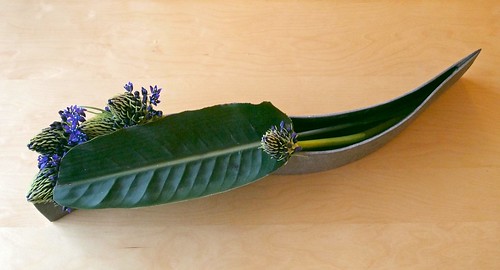Moribana, mass arrangement, Ka-bu-wake.
Chrysanthemum and roses.
Chrysanthemum and roses.
Although this arrangement looks a bit naturalistic, the idea is more to focus on two solid round masses contrasted by an open space in-between them. In this case the Chrysanthemums had a lot of leaves so I could use them to get a larger and more varied mass. Ka-bu-wake is an old ikebana style with two separate groups. Both the water and the space in between are as important as the groups themselves. In this modern arrangement the Ka-bu-wake is made as an abstract freestyle.
Pink is a nice colour for spring don't you think? These Chrysanthemum flowers makes me think about Cherry blossoms.
Pink is a nice colour for spring don't you think? These Chrysanthemum flowers makes me think about Cherry blossoms.




























